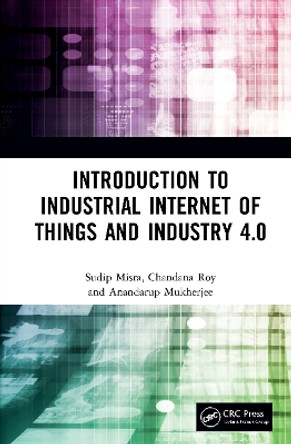Description
Industrial IoT (IIoT) and Industry 4.0 are newly developing and fast emerging domains of interest among students, researchers, and professionals in academia and industry. Due to the popular demand of this topic, Introduction to Industrial Internet of Things and Industry 4.0 is written to serve a diverse readership from the domains of computer science and engineering, mechanical engineering, information technology, industrial engineering, electronics engineering, and other related branches of engineering. Based on the lead author's massive open online courses (MOOCs), this book can be used as a textbook on the emerging paradigm of Industry 4.0 and IIoT, as well as a reference for professionals working in sectors of IIoT.
The book covers the significant aspects of IIoT in detail, including sensors, actuators, data transmission, and data acquisition, which form the core of IIoT. Topics and concepts are presented in a comprehensive manner, so that readers can develop expertise and knowledge. The book helps beginners to gain a basic idea of Industry 4.0 and IIoT as the first section is an overview of IoT applications, infrastructure-based protocols, cloud computing, and fog computing. The second section is designed to impart a basic knowledge of Industry 4.0 and IIoT as well as of the different phases of development in industry. Delving into more advanced areas, other sections in the book cover:
- The business models and reference architecture of IIoT
- The technological aspects of Industry 4.0 and IIoT
- Predictive and prescriptive analytics applied in IIoT-based implementations
- Applications and case studies of IIoT
- Key enabling technologies of IIoT
To aid students and professional master IIoT and Industry 4.0, the book includes conceptual questions, exercises, and learning objectives.
About the Author
Sudip Misra is a Professor in the Department of Computer Science and Engineering at the Indian Institute of Technology Kharagpur. He is also the Abdul Kalam Technology Innovation National Fellow. He earned a Ph.D. in Computer Science at Carleton University, Ottawa, Canada. His current research interests include algorithm design for emerging communication networks. He is the author of over 300 scholarly research papers, more than 120 of which were published by reputable organizations such as IEEE and ACM. He is elected as Fellow of the National Academy of Science India (NASI). He is also the IEEE Communications Society Distinguished Lecturer for 2020-21. Chandana Roy is a senior researcher in the Department of Industrial and Systems Engineering at the Indian Institute of Technology, Kharagpur, India (IIT Kharagpur). Her research interests include Internet of Things (IoT), Industrial Internet of Things (IIoT), Sensor Cloud, and Wireless Body Area Network (WBAN). She co-led the planning, organization and delivery of the massively popular NPTEL MOOC course on Industrial Internet of Things and Industry 4.0. She is an active member of the Smart Wireless Applications and Networking (SWAN) Lab at IIT Kharagpur. Additionally, she worked as an organizing committee member in various short-term courses and workshops organized at IIT Kharagpur. Chandana received fellowships from the Ministry of Human Resources and Development (MHRD), India, and the Defence Research and Development Organization (DRDO), India. She was earlier an Assistant Professor in the Department of Electrical Engineering at Aryabhatta Institute of Engineering and Management (AIEMD), Durgapur. Chandana's works are published in reputed conferences such as IEEE ICC,WCNC, and GLOBECOM, and journals. She serves as a peer reviewer in reputed IEEE, Wiley, and Elsevier journals/transactions. Anandarup Mukherjee is a senior researcher in the Department of Computer Science and Engineering at Indian Institute of Technology, Kharagpur (IIT Kharagpur). He concurrently serves as the Founder and Director of Sensordrops Networks Pvt. Ltd., a govt. recognized startup incubated at the Science and Technology Entrepreneur's Park at IIT Kharagpur. His research interests include, but are not limited to, networked robots, unmanned aerial vehicle swarms and enabling deep learning for these platforms for controls and communications. These solutions are mainly aimed at intelligent and autonomous control and coordination between ground stations and unmanned aerial vehicles (UAVs) as well as between multiple UAVs in flight.
Book Information
ISBN 9780367897581
Author Sudip Misra
Format Paperback
Page Count 370
Imprint CRC Press
Publisher Taylor & Francis Ltd
Weight(grams) 600g









